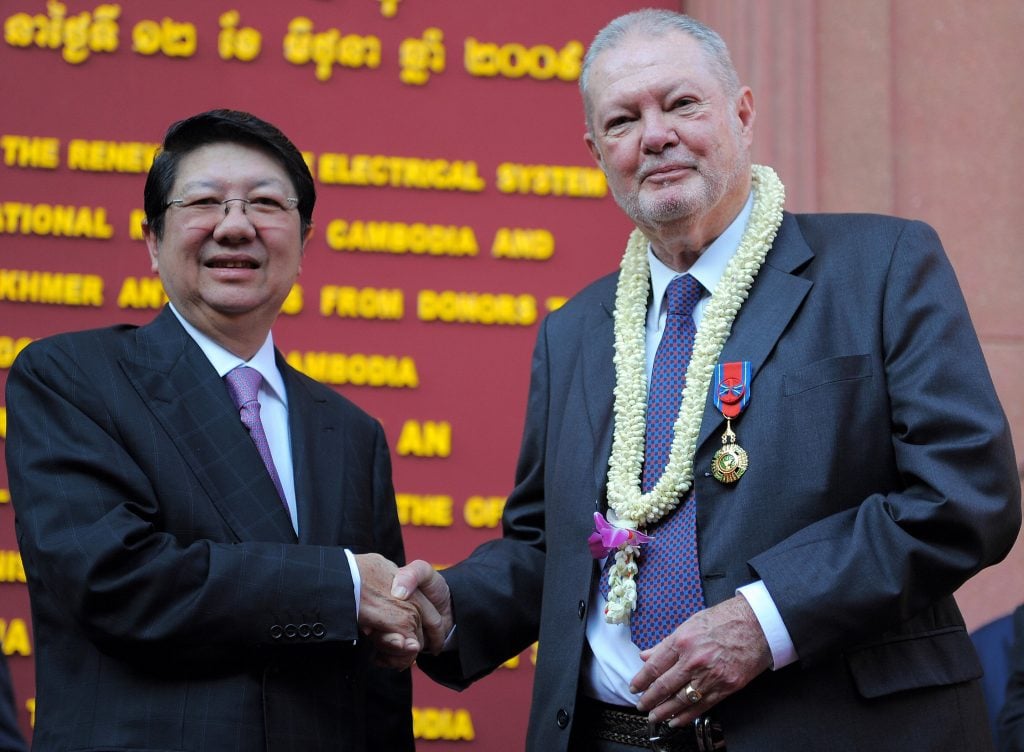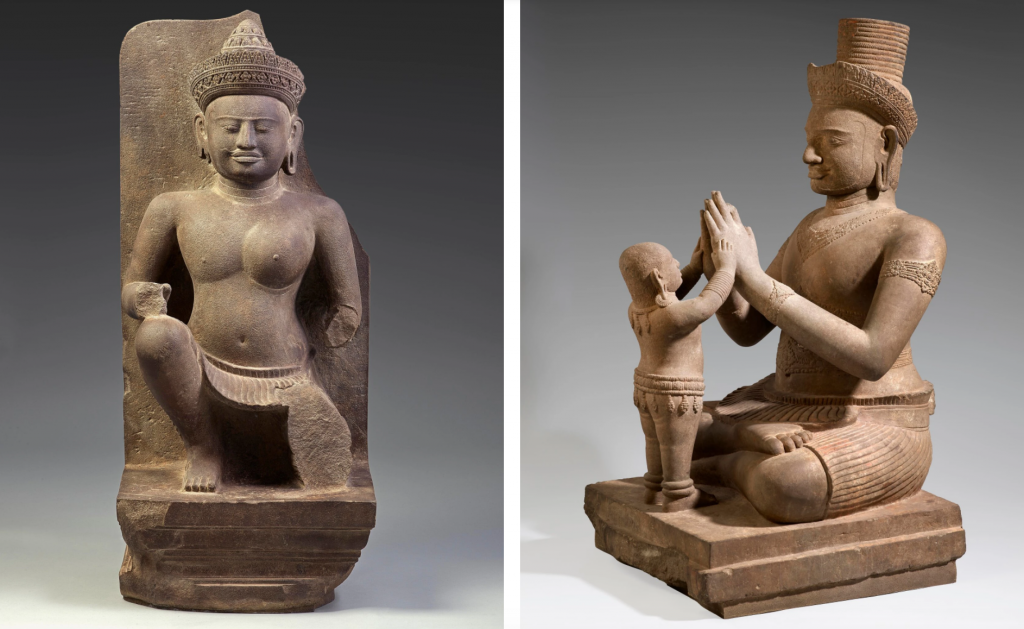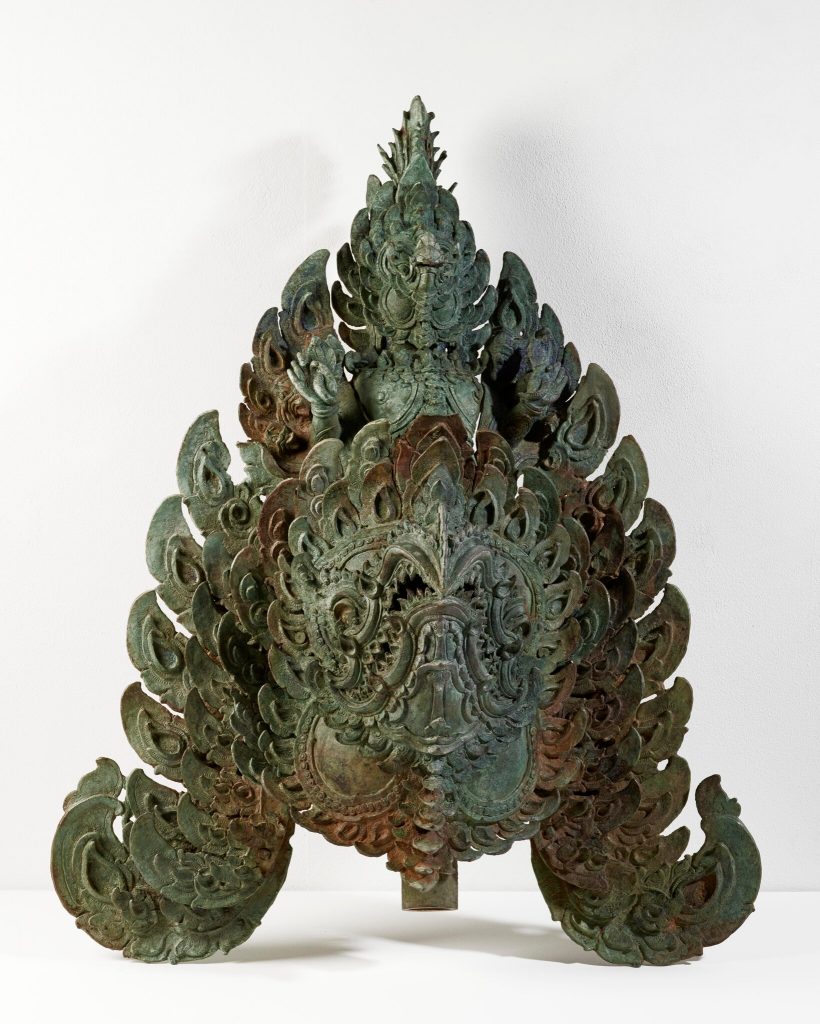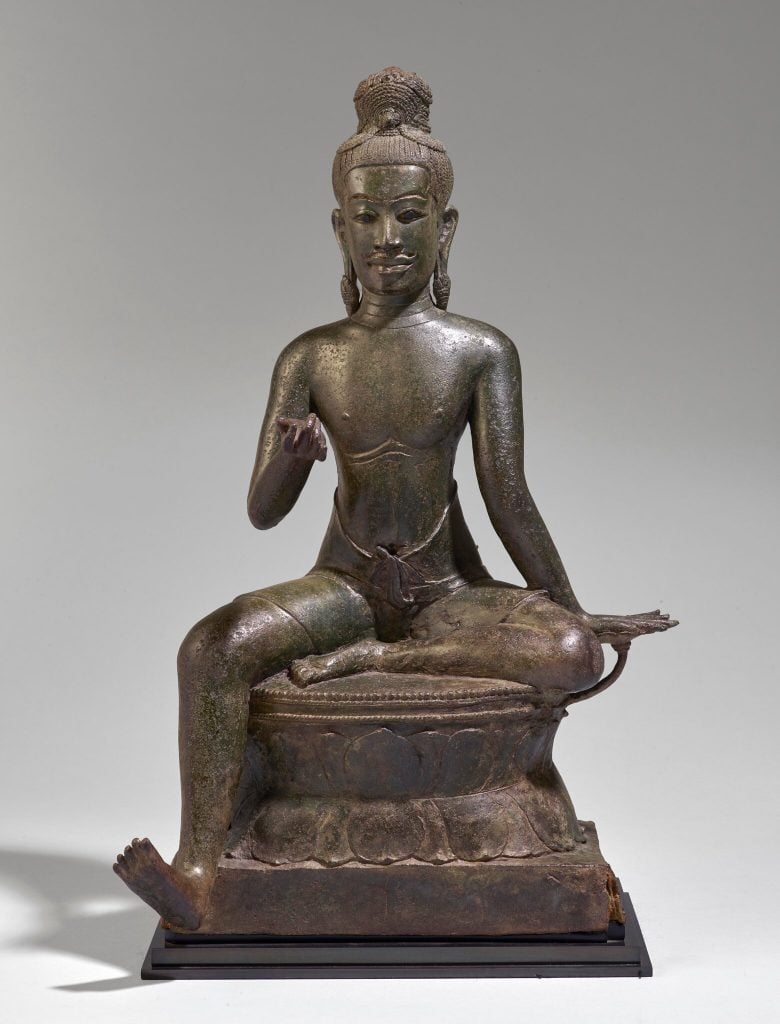Art World
The Daughter of a Collector Charged With Trafficking Looted Antiquities Has Returned Her Father’s $50 Million Hoard to Cambodia
Douglas Latchford was a leading scholar of Khmer antiquities. But he was also charged with smuggling.

Douglas Latchford was a leading scholar of Khmer antiquities. But he was also charged with smuggling.

Sarah Cascone

In a deal three years in the making, the family of the late art dealer Douglas Latchford is repatriating his $50 million collection of Khmer antiquities, suspected to contain looted and smuggled works, to the nation of Cambodia.
A leading scholar of Khmer art, Latchford saw his reputation tarnished when the US Attorney’s Office in the Southern District of New York charged him with trafficking in looted Cambodian antiquities in November 2019. The felony charges carried a maximum sentence of 20 years in prison; he died in August, before he was extradited and any trial was underway.
“Latchford built a career out of the smuggling and illicit sale of priceless Cambodian antiquities, often straight from archeological sites, in the international art market,” US Attorney Geoffrey S. Berman said in a statement at the time.
Cambodia’s Ministry of Culture and Fine Arts announced the donation almost six months after Latchford’s death at age 88. He left behind a 125-work collection—believed to be the greatest of its kind in private hands—to his daughter, Nawapan Kriangsak (formerly Julia Ellen Latchford Copleston).

A sandstone figure from the 12th century from Douglas Latchford’s collection being repatriated to Cambodia. Photo by Matthew Hollow, courtesy of the Royal Government of Cambodia.
“I would like everything that Douglas assembled be kept where people around the world can enjoy it and understand it,” she told the New York Times. “Despite what people say or accuse against Douglas, my father started his collection in a very different era, and his world has changed.”
Latchford had also defended his collecting practices, telling the Bangkok Post in 2010 that if the artifacts hadn’t been excavated and smuggled abroad, “they would likely have been shot up for target practice by the Khmer Rouge.” Two years later, New York’s Metropolitan Museum of Art repatriated a pair of looted Cambodian statues gifted in part by Latchford.

Two objects from Douglas Latchford’s collection being repatriated to Cambodia, including, left, a sandstone figure of a seated Ardhanarishvara from the 10th century. Photo by Matthew Hollow, courtesy of the Royal Government of Cambodia.
With art historian Emma C. Bunker, Latchford wrote three books about ancient Khmer art that the Times has called “foundational reference works for experts.” His scholarship, plus his donations of major works to the National Museum, earned Latchford renown in Cambodia, where he received the equivalent of a knighthood in 2008.
But Latchford’s books showcased rare Cambodian treasures in anonymous private collections, calling into question the objects’ whereabouts. In 2012, UNESCO’s Phnom Penh field office head told the Times one of the tomes was “the inventory of the missing cultural patrimony of Cambodia.”
In the 2019 charges filed by the Southern District, the dealer was accused of taking advantage of Cambodia’s tumultuous political situation and ongoing civil war, selling looted Khmer antiquities to auction houses with false provenances.

A bronze decoration from a late 12th century boat from Douglas Latchford’s collection being repatriated to Cambodia. Photo by Matthew Hollow, courtesy of the Royal Government of Cambodia.
Latchford’s repatriated collection, which contains works as old as the sixth century, is now destined for the new National Museum to be built in Phnom Penh, where they will be displayed under the label of the Latchford Collection.
Some advocates say the mere return is not enough, however. “Where are the admissions of fault? Where are the acknowledgements of harm having been done?” asked Lynda Albertson of the art crime blog ARCA. “Where are the answers we keep asking as to who sold what, to whom, and when?”

A bronze seated male deity from around the 11th century from Douglas Latchford’s collection being repatriated to Cambodia. Photo by Matthew Hollow, courtesy of the Royal Government of Cambodia.
The Cambodian government never spoke out against Latchford directly. When he was charged, Phoeurng Sackona, the nation’s minister of culture and fine arts, told the Khmer Times that “we support all measures so that artifacts can be returned to Cambodia.”
The only acknowledgment of the controversy surrounding the items in the repatriation announcement is a single line thanking the Southern District and the US Department of Homeland Security in helping finalize the agreement.
“Their return,” Sackona told state news outlet Agence Kampuchea Presse, “is an incredible event for the Cambodian people and the world.”